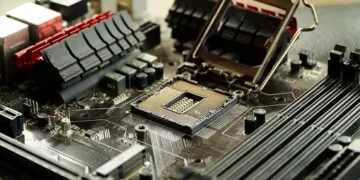Managing equipment in dynamic environments like warehouses or public road systems poses significant challenges. Safety remains a top priority in such settings, and worker devices, be they embedded or mobile, play a crucial role in upholding safety standards. Ensuring that only relevant content and applications are accessible at all times is vital to avoid potential liabilities. Many logistics professionals express concerns about device misuse during equipment operation. However, achieving comprehensive infrastructure-level management for every touchscreen technology is a substantial task.
In the logistics industry, there’s no one-size-fits-all solution, and finding an easy fix is elusive. While a unified management interface would be ideal, the path to its realization is far from straightforward. Often, discussions lead to the question: “Can we build it?” Unfortunately, in most cases, this question doesn’t yield a satisfying answer. The process of building such infrastructure is complex and uncertain, making it challenging to estimate costs, resources, and timelines. What is certain is that building it will be more challenging, time-consuming, and less effective than anticipated.
Consider what happens when introducing new hardware or when existing equipment reaches its software end of life. Instead of focusing on innovation and scalability, organizations can find themselves burdened with the task of maintaining their infrastructure while simultaneously managing device deployment.
The deployment of various devices in warehouses, including handhelds, forklift controls, industrial information displays, digital safety signage, and rugged tablets, presents a complex and heterogeneous landscape. A decade ago, no organization was fully prepared to handle this diversity. Nevertheless, devices have revolutionized industries and logistics by augmenting worker capabilities, improving safety, and increasing efficiency. There’s no turning back; devices have become integral to operations in industrial sites, distribution centers, and transportation.
Rather than viewing devices as a new problem to solve, organizations can see them as an opportunity for innovation and improvement. Imagine the possibilities if you could update all your warehouse devices worldwide with ease, allowing for more frequent content and fix deployments. What if you could centrally manage various device form factors, from tablets to handhelds, in-vehicle mounts, and signage, all through a modern dashboard?
Esper offers a solution to leverage the advantages of devices within your organization. We provide a predictable, reliable, and scalable system for managing devices. Companies at different stages of the supply chain have adopted our device infrastructure to enhance their device strategies. With our best-in-class infrastructure and tooling, organizations can stop viewing devices as a problem to be resolved and start considering them as a unified platform to deliver superior experiences to employees and customers.
Leveraging the power and reach of the cloud, Esper empowers you to manage devices at any scale, update content and applications, enforce policies, and conduct safe testing with precise parameters and targeting. This ensures that every deployment aligns with your high standards. Take the next step in your device journey, and let Esper show you the potential benefits of our solutions for your organization.
Explore top supply chain logistics news at The Supply Chain Report. Interested in international trade? Visit ADAMftd.com for free tools.
#LogisticsSafety #WarehouseManagement #DeviceInfrastructure #SupplyChainInnovation #EquipmentManagement #WorkerSafety #DeviceDeployment #TechnologyInLogistics #FleetManagement #SafetyStandards #LogisticsTechnology #IndustrialDevices #EsperSolution #DeviceManagement #CloudPoweredLogistics #ModernLogistics #WarehouseInnovation #TouchscreenTechnology #LogisticsEfficiency #DeviceStrategy #LogisticsOptimization #IndustrialSafety #RuggedTablets #ForkliftControls #DigitalSafetySignage

















